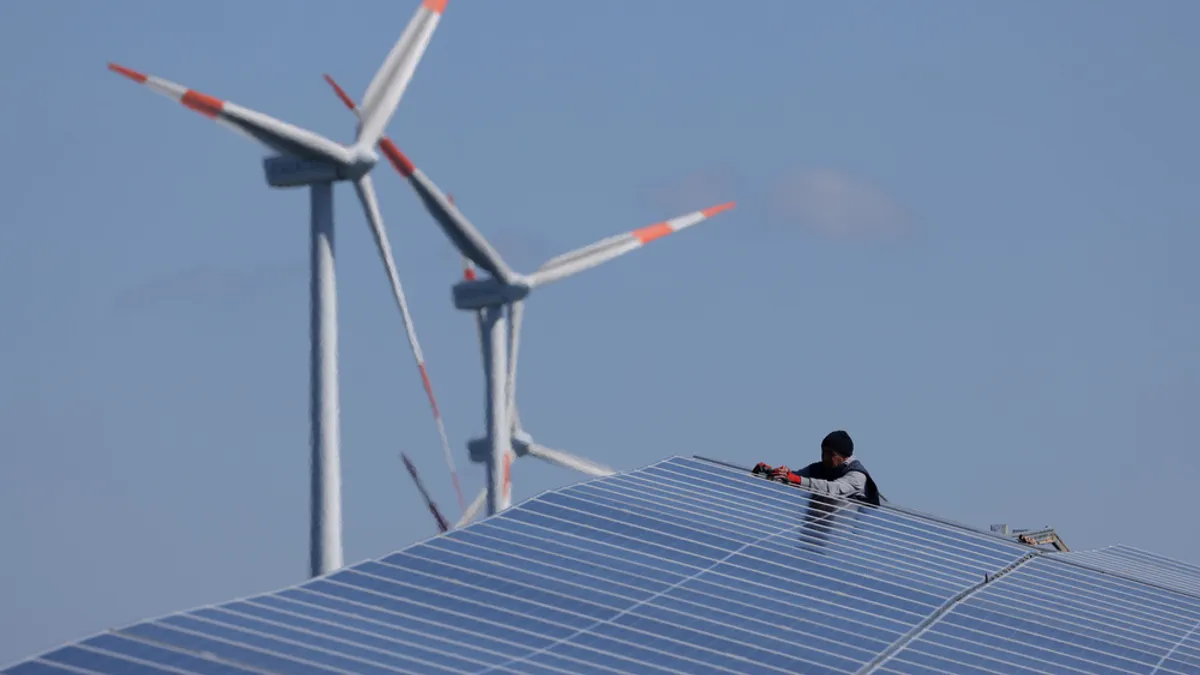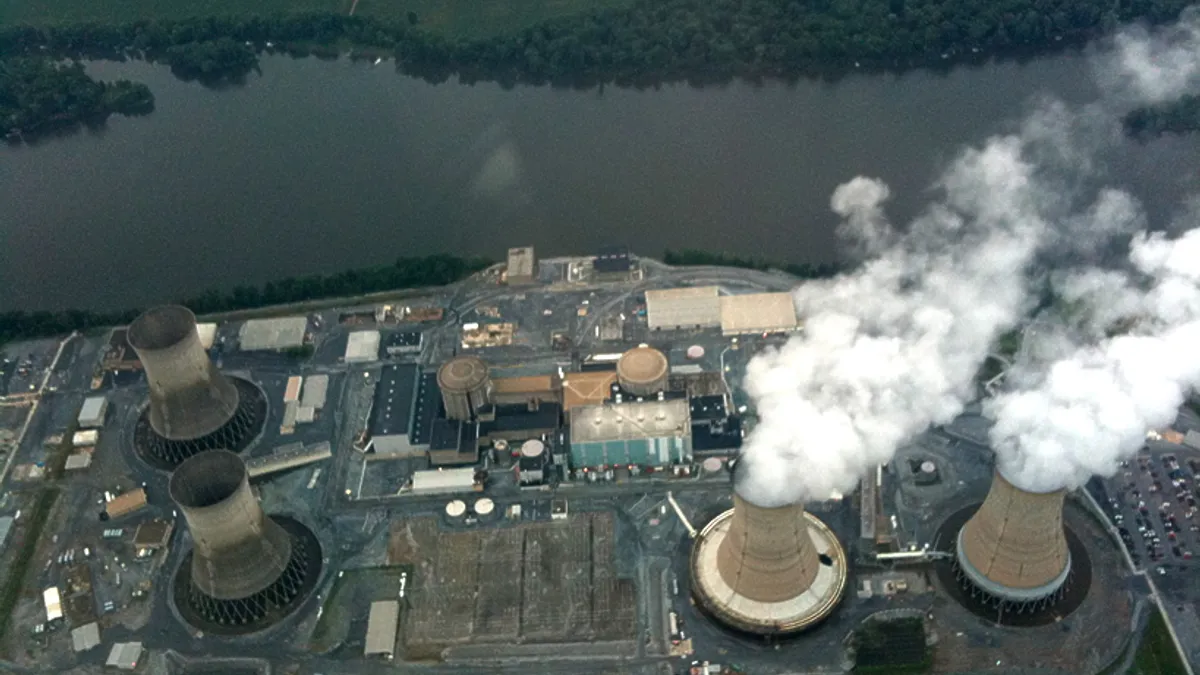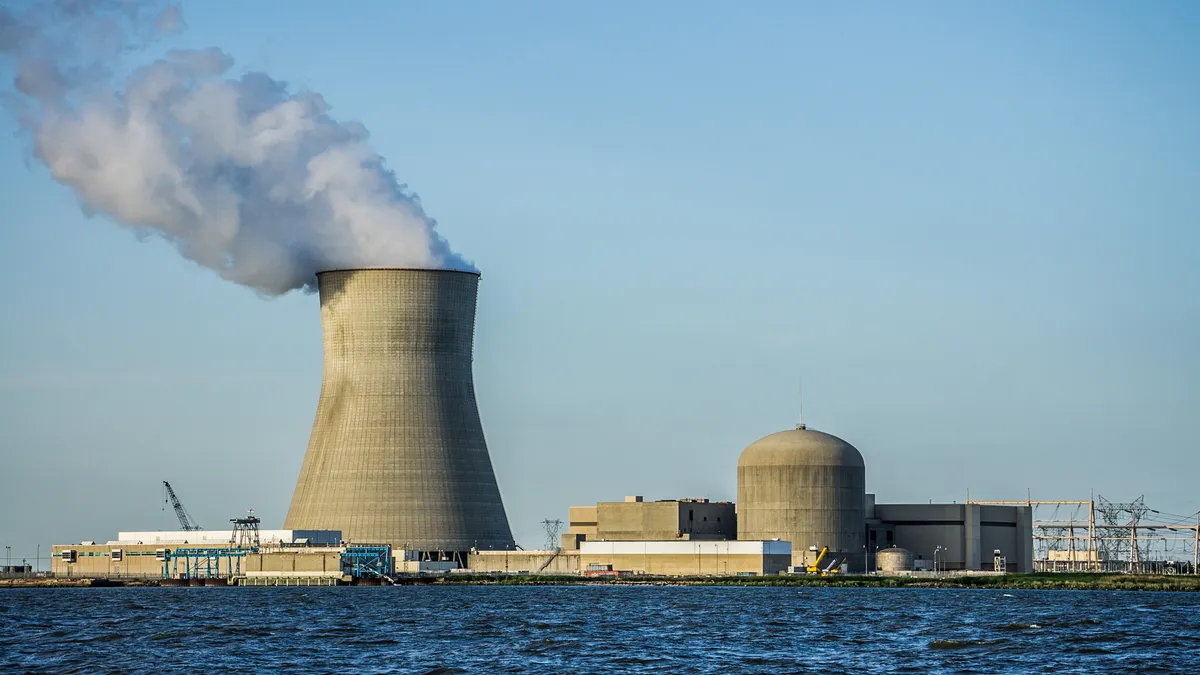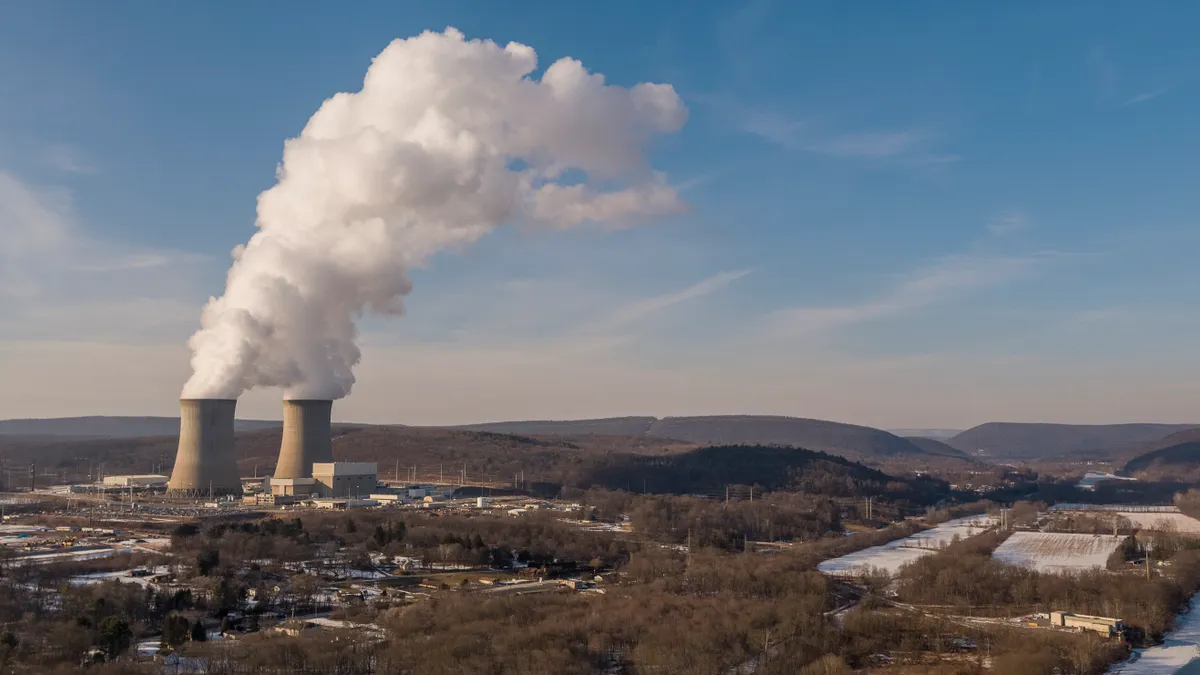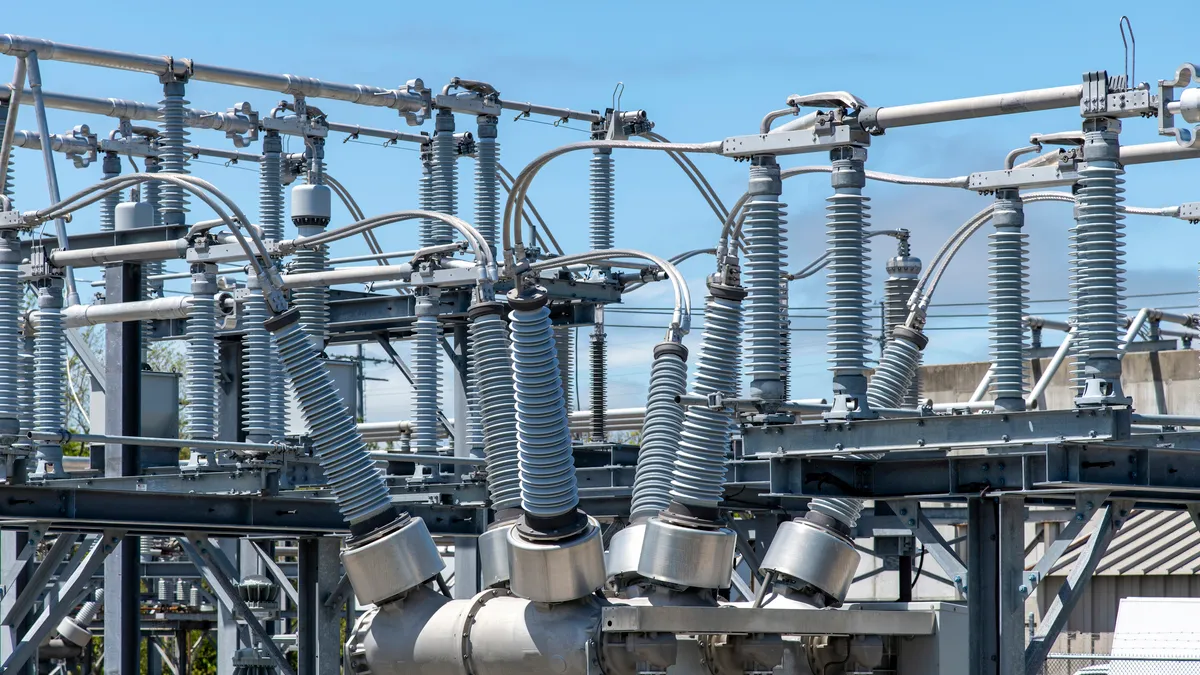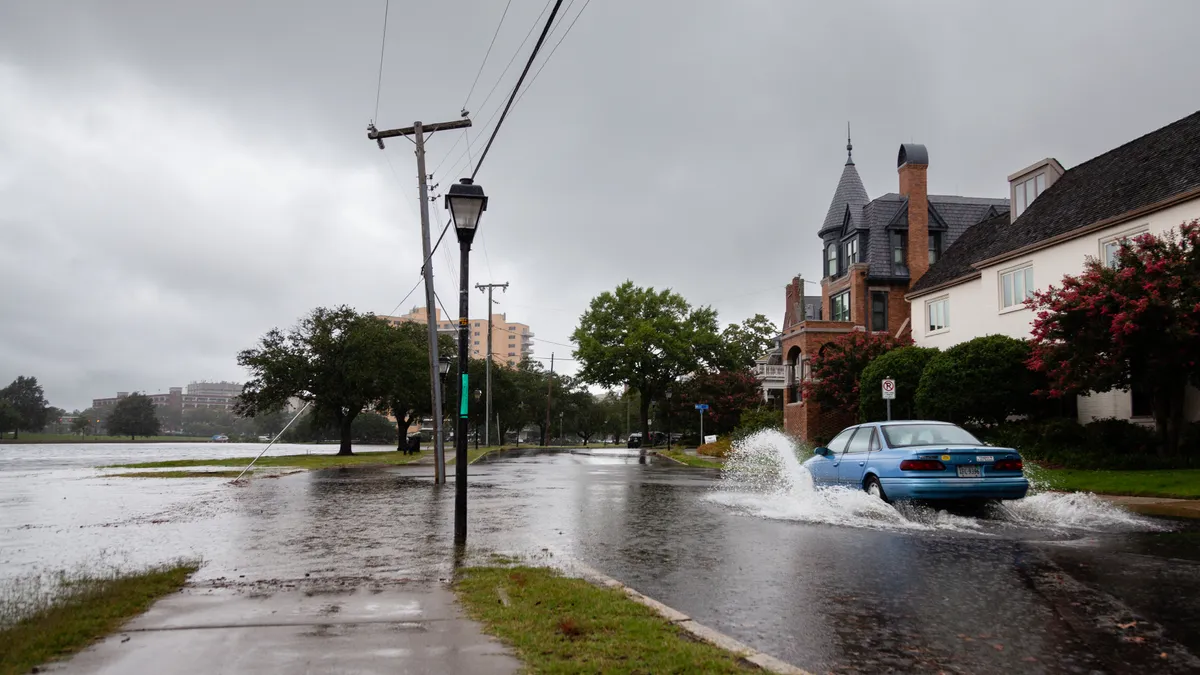New York's 2019 Climate Leadership and Community Protection Act (CLCPA) now dominates the state's policy debates and agenda on power system transformation, but regulators' foundational Reforming the Energy Vision (REV) initiatives and regulatory proceedings remain vital, those whose created and shaped it say.
In 2015, the New York power system's aging infrastructure, declining efficiencies, and rising electricity rates required modernized infrastructure, operations and markets, REV's Track One Order declared. It offered a vision of a "reoriented" regulatory model with "a consumer-centered approach that harnesses technology and markets."
"REV's impacts still reverberate through New York's regulatory process and its key pillars will make reaching CLCPA's goals easier, faster, and more cost-effective," said Advanced Energy Economy (AEE) Policy Director Danny Waggoner, who was in REV proceedings from the beginning. It may not have met all expectations, but "REV animated markets and changed utilities' business models."
New York's energy transition was under way and utilities were changing, Consolidated Edison spokesperson Allan Drury said. But "the heart of REV" was "its recognition that climate change is real and due to human activity" and its regulatory framework, which created "customer empowerment" through customer-owned technologies like distributed solar, batteries, and energy efficiency.
REV drove landmark changes in how distributed energy resources (DER) are valued by utilities and customers, regulators and stakeholders both agreed. Its work on how utility performance is rewarded and how utilities can serve the power system remains unfinished, but if the REV initiatives still underway are completed, it will fulfill the vision and help New York's ongoing energy transition succeed, they added.
The vision
New York regulatory agencies and system stakeholders collaboratively developed REV's more than 40 initiatives from Cuomo administration-led clean energy programs and its 2015 State Energy Plan.
The 2015 energy plan required a 40% emissions reduction from 1990 levels, 50% renewables generation, and a 600 trillion British Thermal Unit (BTU) energy efficiency improvement by 2030. That year, Hawaii's nation-leading renewables mandate was 40% by 2030 and 100% by 2045, and California accelerated to 50% by 2030, while Massachusetts targeted only 25% renewables in 2030.
New York Department of Public Service Deputy, Markets and Innovation, Scott Weiner, led the effort for New York Public Service Commission (NYPSC) Chair Audrey Zibelman.
"REV was a new way of thinking about the electric system that changed the roles of the utility and the consumer," Weiner, now a principal with policy consultant SAW Associates, said. Though CLCPA is now the focus, "REV is fully infused into the state's energy system and part of every New York energy initiative."
In the wake of Superstorm Sandy, REV's core objectives also included increasing system reliability and resilience through enabling and leveraging DER markets, Weiner added. It built on existing programs like New York's Green Bank, the NY-Sun solar initiative, and the BuildSmart NY public buildings retrofit.
The February 26, 2015, NYPSC REV Track One Order introduced the ambitious REV framework, said AEE's Waggoner. It also proposed new system planning approaches that recognized DER value and called for utility investments to integrate and operate, but not own, market-driven DER solutions.
The "central vehicle" would be a Distributed System Platform (DSP), not fully defined at the time, that would be operated by utilities or a third party integrator if utilities proved inefficient, Waggoner said. The DSP would enable markets in which DER owners and large-scale generators could transact with power providers, facilitating the efficient use of storage, microgrids and demand-response, the order said.
The order also called for utility-led energy efficiency programs and technology demonstrations and utility adoption of private sector-built non-wires alternatives (NWAs). NWAs would allow utilities to protect system reliability but defer or avoid infrastructure investments with lower-cost, customer-owned, clean energy DER.
The May 19, 2016, NYPSC Track Two Order addressed ratemaking and the utility business model. Its vision was to move away from cost of service regulation and align utility and customer interests by providing utilities with "market-based and outcome-based earnings opportunities" for achieving REV objectives.
Financial mechanisms to compensate utilities for avoiding or deferring capital expenditures with NWAs was an example of the regulatory reorientation, Waggoner said. Earnings adjustment mechanisms (EAMs) would go to utilities for energy efficiency investments. They could also earn revenue for demonstration project investments and impose charges on market participants for DSP services, REV initiatives proposed.
But Track Two work became dominated by development of the Value of DER (VDER), a successor tariff to net energy metering (NEM), both Weiner and Waggoner said.
"Net metering was successful, but it did not recognize the full value of DER and give customers a return on their investment that would drive the market," Weiner said. "The idea of greater value in DER was radical at that time, but the long deliberate REV process allowed reaching it."
VDER was one of REV's biggest achievements, regulators, utility representatives and other stakeholders widely agreed.
Two REV wins
Of the many REV initiatives and proceedings, participants and regulators repeatedly noted two accomplishments.
Value of DER
The VDER came out of 2017 and 2018 "transitional orders" in the value stack compensation proceeding (15-E-0751). The Value Stack provides DER owners with credits based on the value to the power system of DER's energy, capacity, location, and environmental and demand reduction attributes, the New York State Energy Research and Development Authority (NYSERDA) summarized.
An April 18, 2019, ruling resolved stakeholders' energy value and capacity value debates about cost shifts and determined the appropriate credit for customer-owned community-based projects.
"VDER was a raging success," Weiner said. DER was "a foundational principle of REV" but required "a REV process that allowed participation by all stakeholders" to resolve contentious issues about its full value. VDER recognized "the various present value streams and left the process open for recognizing future value streams."
It "avoids cost shifts by recognizing full value," but also "allows DER owners to understand the system has costs, and they need to pay their share," he added.
The contentious VDER debates "took a lot of commission bandwidth" and "sidetracked the settling of other issues like EAMs, but it is now generally working well," AEE's Waggoner said.
Early iterations of the VDER tariff allowed fluctuation of the values, but the commission's 2019 adjustments stabilized it and allowed New York solar markets to explode, agreed Dave Gahl, Solar Energy Industries Association (SEIA) Senior Director of State Policy, East.
"Some mid-sized community solar projects, between one MW and five MWs, in some locations, might not have penciled out without the VDER tariff, especially in disadvantaged communities," added Westchester Power Program Director Dan Welsh.
New York utilities also used the VDER to bring solar to their customers, ConEd's Drury and Central Hudson Manager of Regulatory Affairs Joe Hally agreed.
It made New York the leading 2020 U.S. community solar market because it "creates stable, cost-reflective price signals that align developer compensation and innovations with societal benefits," said NY Department of Public Service spokesperson James Denn.
Non-wires alternatives
The success of the REV NWA proposal, which called for utilities to consider DER instead of infrastructure investments to meet new reliability needs, has been limited because market factors have kept alternative investments in some locations from being cost-competitive, stakeholders said. As a result, fewer NWAs have been built.
ConEd's Brooklyn-Queens Demand Management (BQDM) program proved DER cost-effectively avoids distribution system capital expenditures and led to more NWAs, NY Department of Public Service's Denn said. BQDM's distributed storage and demand management solutions deferred the need for a $1.2 billion substation upgrade as far as "the utility's planning horizon," he added.
REV's animating of DER markets helped ConEd "push back" the substation construction in favor of a DER portfolio, Drury acknowledged. The utility is now working to develop similar projects in other locations, he added.
When ConEd proposed a Brooklyn-Queens substation, regulators ordered it to define the need and allow third parties to propose solutions, Weiner recalled. "The resulting BQDM project changed the way utilities approach and address system needs, and within two years, NWA planning became standard operating procedure in New York."
The REV proceeding developed the "benefit-cost analysis framework" that assures NWAs are cost-effective and have "societal benefit," over traditional transmission and distribution investments, agreed Central Hudson's Hally.
The analysis shows when and where utilities can replace earnings on capital investments with a REV-developed performance-based revenue stream, Weiner added.
There are "not as many NWAs as REV stakeholders had hoped," AEE's Waggoner acknowledged. But "absent those earnings opportunities, we would have even fewer," and "utilities will be inclined to use them more when costs for NWA components like batteries come down and the price of carbon increases," he said.
Two important issues — earnings incentives and the development of the utility-run distribution platform — remain unfinished, REV participants said.
The "to do" list
Other REV ambitions were sidetracked by work on VDER, but are beginning to emerge, several stakeholders said.
Earnings adjustment mechanisms
The original EAM concept was sound, but a stronger framework to align them with state goals was not completed, AEE's Waggoner said. Implementation through utility rate cases has been inconsistent because "the horse trading in rate cases leaves benefits on the table," which can reduce the incentive value of EAMs.
But "they are being used in rate cases, and they concentrated utilities' attention and learning on meeting metrics-based goals for energy efficiency," he added. REV's EAM debate also made it clear New York needed smart meters to develop better metrics, he said.
"Energy Efficiency programs have grown significantly since the start of REV," Central Hudson's Hally agreed.
The NYPSC asked utilities for new business model and compensation proposals, "but utilities rely on stability and predictability and were never going to propose big changes," SEIA's Gahl said. Continuing work on EAMs is important because they can reward utilities for being "active partners in DER deployment," he added.
Work on EAMs was prevented by the VDER debates that caused "a regulatory bottleneck," AEE's Waggoner said. Prioritizing AMI deployment and access to energy and system data "might have allowed realizing more of the Track One order's EAM and DSP visions."
Distributed system platform
"The DSP concept didn't advance because there were gaps between existing capabilities and the vision," Waggoner said. "But the AMI rollout and statewide Integrated Energy Data Resource (IEDR) platform and current work to monetize distributed storage benefits are filling gaps in information sharing capabilities necessary for DSPs."
The key DSP debate "was whether the utility or a third party should provide the platform's three functions," Weiner recalled. But "only utilities can do system planning and operations, and it became clear they should also be market administrators," he said.
Under REV, New York State's investor-owned utilities are evolving into DSP providers, Denn reported. Their progress includes innovative market-enabling demonstration projects and work on data sharing, hosting capacity, EV charger deployment, and DER integration, according to the Joint Utilities' DSP website.
REV and the CLCPA
In 2019, in response to the CLCPA law, New York regulators approved the April 8, 2020, Amendment to the 2015 State Energy Plan. By then, California's renewables mandate was 60% by 2030 and 100% by 2045, and Massachusetts had added a Clean Peak Energy Standard to its multi-tiered clean energy standard that together targeted a "fully decarbonized electricity sector in 2050."
New York's new plan increased the renewables mandate to 70% by 2030 and required 100% zero emission electricity required by 2040. It also required 9 GW of offshore wind by 2035, 6 GW of solar by 2025, along with 3 GW of energy storage and a 185 trillion BTU energy efficiency improvement from the current forecast by 2025.
It also created a Climate Action Council to develop a CLCPA scoping plan and a diverse Climate Justice Working Group to ensure that 35% to 40% of benefits are "realized by disadvantaged communities."
But completing REV's work to "animate markets and align the utility business model with state goals and a 21st century grid will help deliver those CLCPA goals," Weiner said.
NY Department of Public Service's Denn and ConEd's Drury agreed. "Continued investment in the technology, customer engagement techniques, and utility programs that enable the private market to innovate most efficiently will be necessary to achieve CLCPA's targets," Denn said.
ConEd outages have become "too frequent and devastating" to be "random, one-off events," Drury added. But the best could still be ahead and the state can meet its climate change challenge if New York maintains the REV period's "urgent" pace and utilities and third parties develop new technologies and find the best ways to deploy them, he added.




